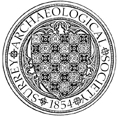Central Trading Estate, Staines
Evaluation and subsequent excavation by J McKinley of Wessex, for MEPC, was carried out in advance of the redevelopment of the estate. The evaluation identified three broad zones within the site: the edge of the town gravel island, a broad alluvium filled channel to the north and, beyond this, a second gravel island. Subsequent work concentrated on the two islands. Excavation on the northern island (centred at TQ 033 719) recorded part of an enclosure/field system of Bronze Age date and another of Roman date, as well as agricultural features from the medieval period.


